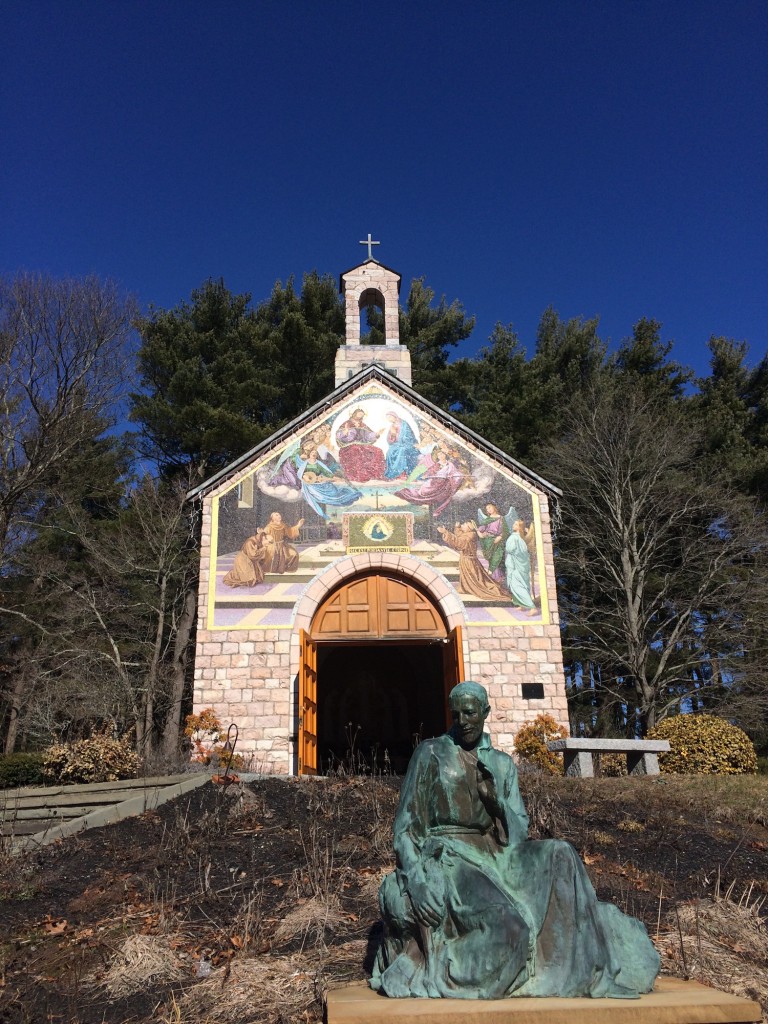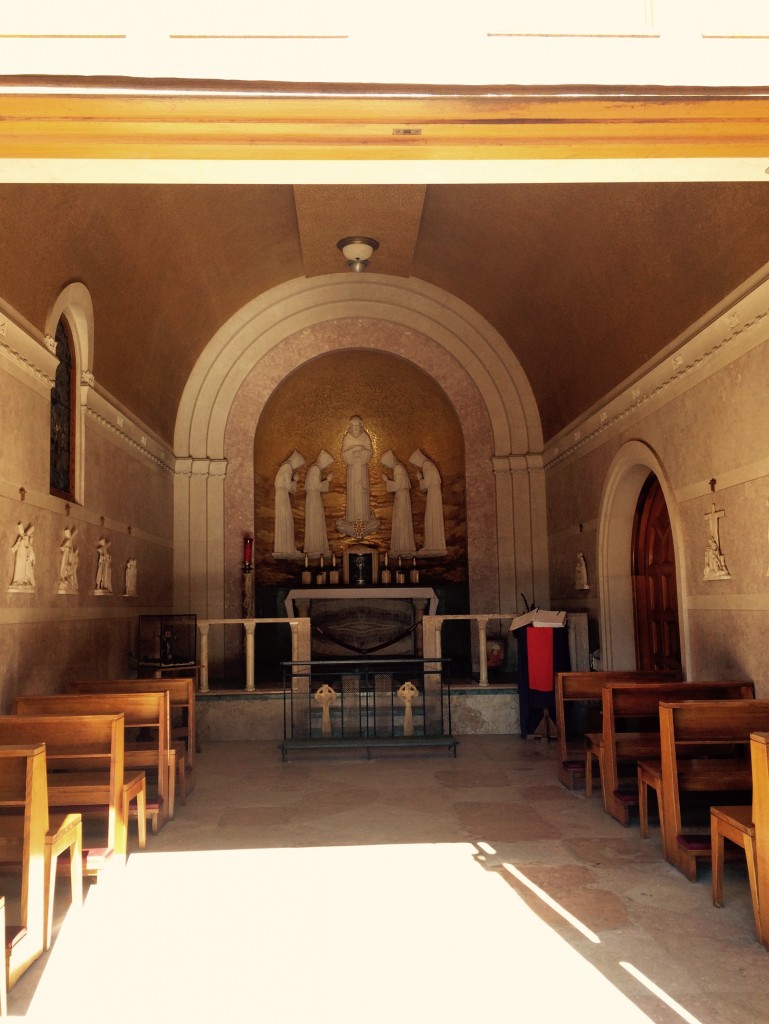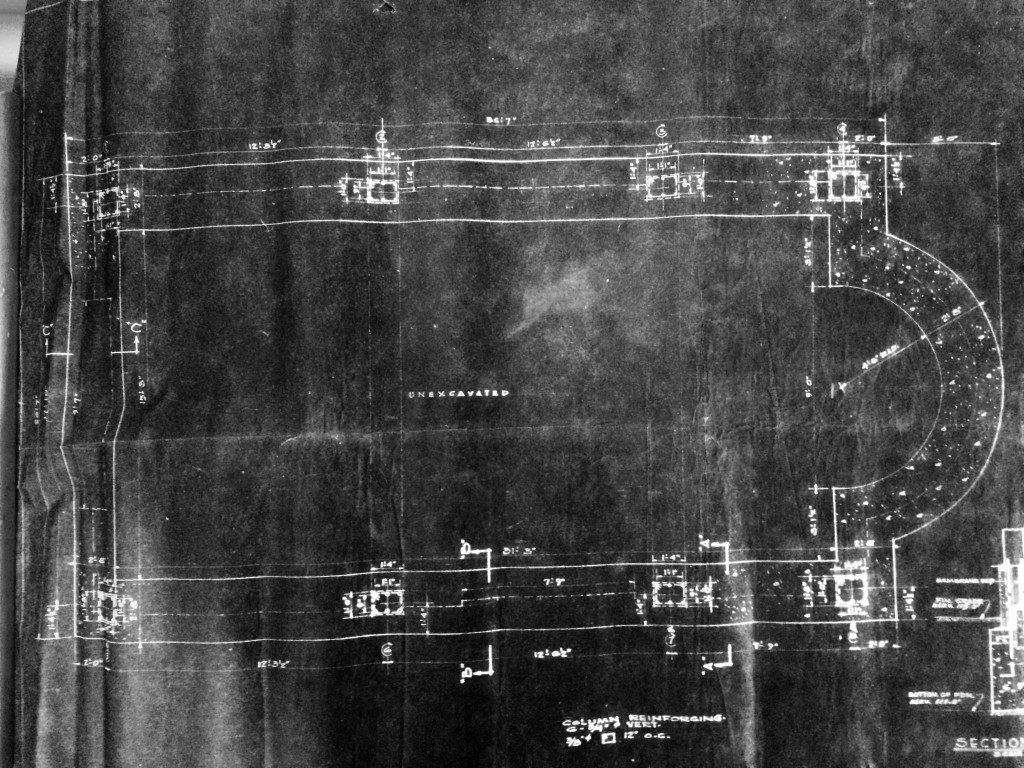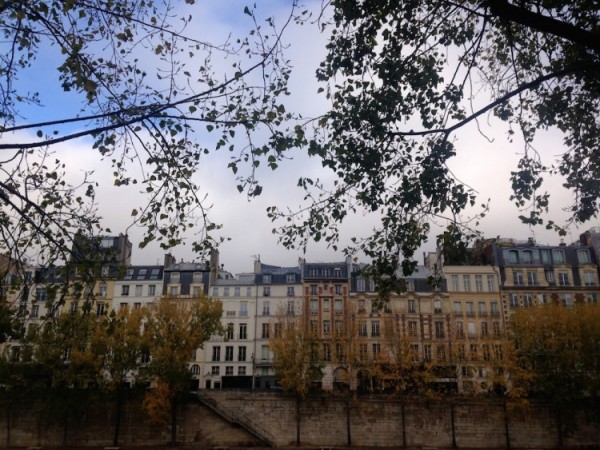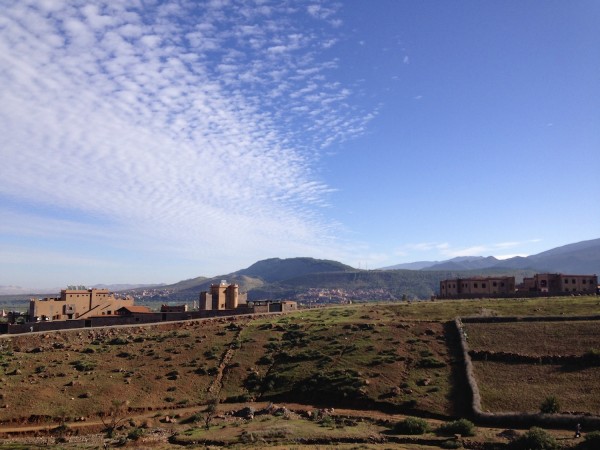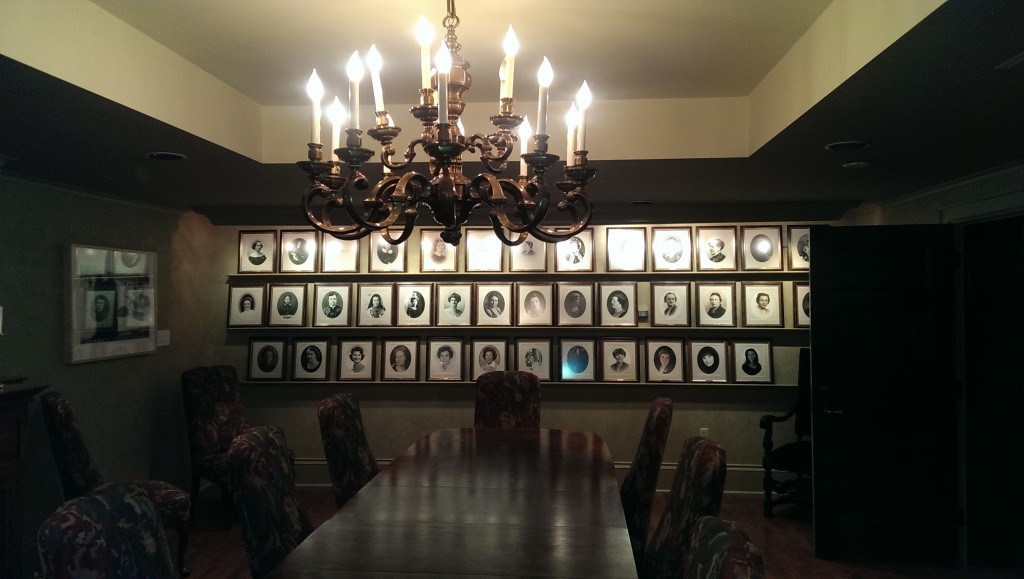Solena Cavalli-Singer is an undergraduate Art History major and recently presented her senior paper, ‘Intent vs. Function: Portiuncula Replications and their Departure from Assisi.’ She was awarded the Art History Department Undergraduate Research Grant to help make this project possible.
I had no idea what to expect as I headed to Hanover, Massachusetts. All I knew was that I was there to see a chapel, one that had been carefully constructed to match its original counterpart in Assisi, Italy. The chapel, called the Portiuncula (Latin for “portion of land,”) was inspired by the Portiuncula restored by Saint Francis in 1209, which currently resides inside the Basilica of Santa Maria degli Angeli. Saint Francis’ chapel has also become the inspiration for several other replications throughout the United States. I was fortunate enough to receive a grant so that I would be able to visit the replica in Hanover and use my research to aid in my Senior Paper.
- Portiuncula Chapel, Hanover, MA
- Interior of Portiuncula Chapel, Hanover, MA
The Portiuncula in Hanover resides on the Cardinal Cushing Centers campus, a school for individuals with intellectual disabilities. It is a prominent fixture on the campus, and in the town, because it is also the site of Cardinal Cushing’s resting place. The building is small, yet impressive, and one cannot help but be in awe when looking at it. In fact, the day I visited the sun was shining so brilliantly, illuminating the fresco above the entrance, that it was as if Saint Francis himself was overjoyed that I had come to see this piece of him.
- Cardinal Cushing
- Chapel Observance, nearly 10,000 people attended
After viewing the chapel, I was given free rein of the archives, located in an old dorm room that was in desperate need of organization. Newspaper clippings, photo albums, and old brochures filled up more than half of the room, but there was no true order to anything. Of several things I was sure: first, although I have never been in an archive before, I was certain that most people are not able to mill about and view what they please as I was able to do. Second, given the disorder of the room, I had no clue where to begin, and third, the most important thing was that I needed to leave with a floor plan of the Portiuncula. I spent well over an hour digging through various filing cabinets. The things I came across! Financial plans, newspapers detailing crimes associated with the Center, even a drawer full of relics with their original certificates – I felt as if I were reading someone’s diary, digging into their dark and complicated past.
I gathered all the information I could, but still had no luck with the floor plan. This was particularly concerning because I did not know how else I would obtain the dimensions of the chapel. After giving up and deciding that I would have to just contact various sources associated with the building to get the measurements, I began to pack up and head out. Then something happened that could only be considered a miracle. Three steps from the exit, I felt the urge to turn around. As I turned, I noticed a paper bag full of rolled up pieces of paper in the back corner of the room. I don’t know if it was pure coincidence, or perhaps Cardinal Cushing and Saint Francis really want me to write this paper, because those rolls of paper ended up being the original blue prints of the chapel – a gold mine! I almost cried tears of joy. Thirty minutes later, with all of the necessary information in my possession, I left Hanover with a smile on my face and excitement to piece together all of my research.
